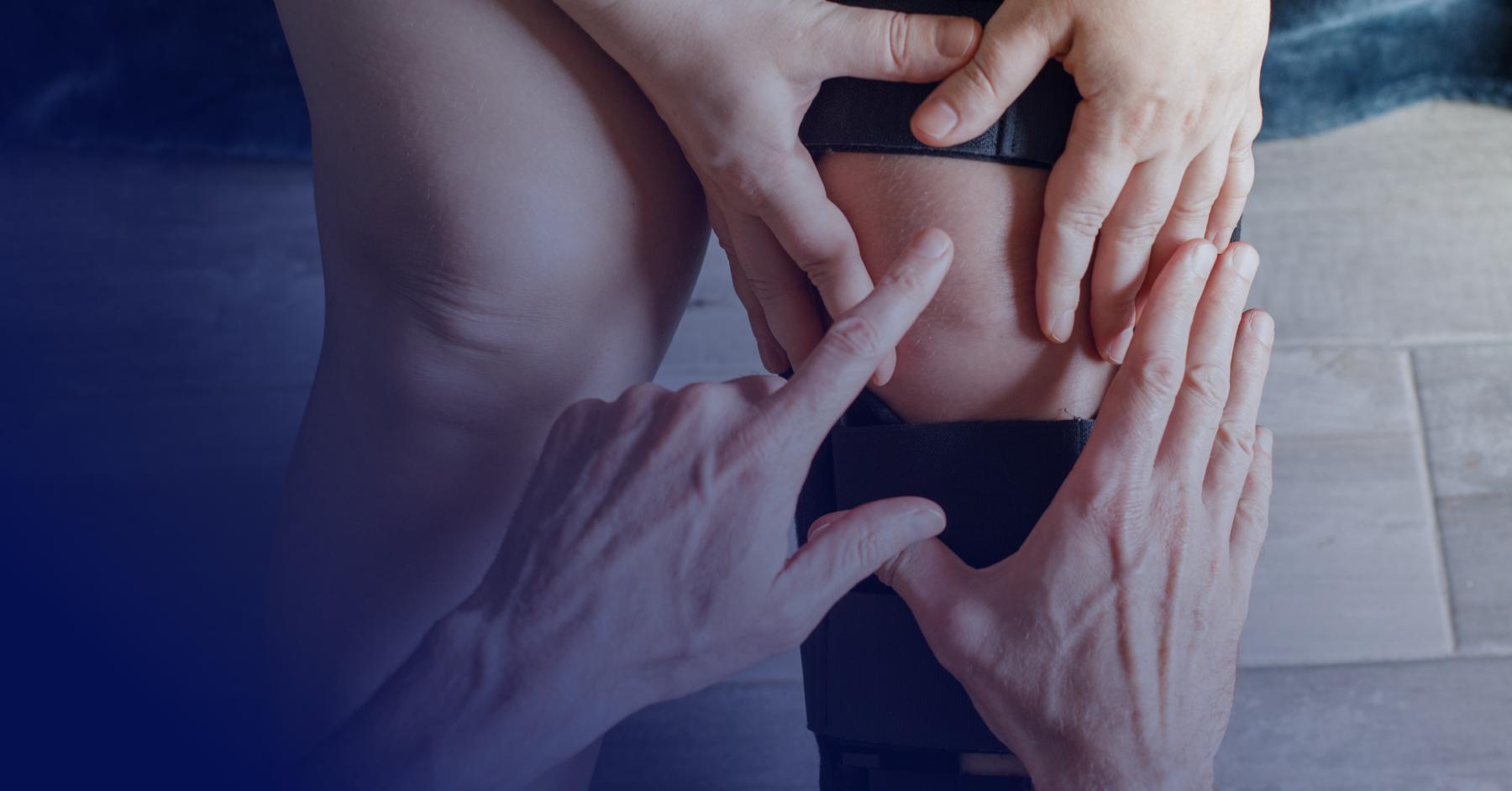Preventing IT Band Syndrome
Knee Injuries, Workout Injuries

Knee pain can be caused by a number of orthopedic disorders. One of them is IT band syndrome. Learn more about this common condition and how to prevent it.
Knee pain is quite common among serious runners, cyclists, and weightlifters. The strain those activities put on the knee joint can lead to sprains and tears in the surrounding muscles. While it may seem surprising, sometimes your knee pain may not be due to an injury to the knee itself, though, but due to an issue with the IT band.
You’ve probably never heard of the IT band, or iliotibial band, but this thick rope of fibrous tissue running from the hip to the knee is what stabilizes the joint. It also helps you rotate and extend your knee. If the IT band becomes irritated, you’ll experience pain on the outside of the knee. When running, the pain may radiate from the knee to the hip. You may also hear a popping sound around the joint. Swelling is another symptom of IT band syndrome. The condition can impact your range of motion and stop you from doing your favorite exercise. To avoid falling victim to an IT band injury, it’s good to understand what causes IT band syndrome, how it’s treated, and what you can do to prevent it.
The causes of IT band syndrome
IT band syndrome is typically caused by friction between the band and the lateral femoral epicondyle (a bony protrusion at the side of the knee) that is often the result of overuse. Long-distance runners, cyclists, and weightlifters are prone to the syndrome as doing these strenuous activities long-term can inflame the IT band — especially if it is accompanied by problems with form.
For runners, IT syndrome may result from an uneven gait, such as one knee bumping inward to the other. Cyclists may feel pain along the outer knee if their toes rotate inward when secured in the pedals. For weightlifters, improper posture, particularly when performing squats, may strain the IT band, too. If your knees aren’t thigh-width apart and aligned with your toes when squatting, you can irritate the IT band.
Treating and preventing IT band syndrome

IT band syndrome responds well to conservative treatments, such as the RICE method (rest, ice, compression, and elevation). Over-the-counter anti-inflammatory medications or corticosteroid injections may also ease the pain. Moving a foam roller along the outside of your thigh and hip can unlock a tight IT.
A trainer or a physical therapist can pinpoint the source of the friction along the IT band when you run or work out. Correcting the flaw can relieve the pain. A physical therapist can also guide you through exercises to strengthen and stretch the IT band, which can both relieve the discomfort and prevent further injury. Here are four to try:
The “figure four” stretch. This is a great exercise to loosen any tightness in the hips and glutes: Lie on your back with your feet flat on the floor. Then, bring your right ankle over the top of your left knee and raise your left knee toward your chest. Put your right hand through your legs and clutch the fingers of your left hand just below the bent knee. As you keep your shoulders on the ground, pull your leg towards you. You should feel a stretch in your right hip and glute. Hold for 30 seconds and switch to the other side. Do three repetitions per side.
The “clam.” To strengthen the hip muscles that support the IT band, try the “clam.” Lie sideways with knees bent at 90-degree angle. Lift one leg up to the ceiling as you keep your ankles together. Repeat 20 times on each side.
Side-lying hip abduction. Strengthening your gluteus medius, a muscle group that stabilizes your pelvis, will prevent your knee from shifting inward as you run. To start, lie on your side with your hips aligned with each other and your top leg straight. The bottom leg and arm are bent underneath for support. Lift your top leg about eight inches and hold for five seconds before lowering. Do two sets with 10 repetitions on each leg. Remember to maintain your body in alignment and not rotate your hips backward or forward.
Leg stretch. Stand upright with your legs crossed. Place your painful leg to the rear. Lean away from the affected side so you feel a stretch along the outside of your leg. Hold for 30 seconds and repeat five times.
Let All Sports PT get you back on track
At All Sports Physical Therapy, we’ll identify what’s causing your discomfort, whether it’s IT band syndrome or another orthopedic condition. Then, our experienced physical therapists will create a treatment plan to get you back on track pain-free. Contact us today for a consultation.



